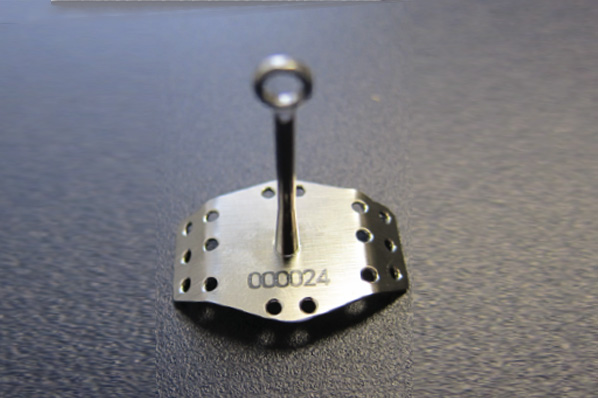
Manual control of the upper esophageal sphincter (UES) is possible with a simple implant placed on the cricoid cartilage. The swallow expansion device (SED) has been shown to increase UES opening to greater than normal proportions (Laryngoscope 2010 Apr;Suppl 1:S1-S16.). The SED is placed on the cricoid cartilage through a small cervical incision. Implantation takes the technical expertise and time required to perform a simple tracheotomy. A small post protrudes through the skin that, when pulled forward by the patient, opens the UES to super-physiologic proportions.
The device has proven safe and effective in eliminating aspiration in cadavers and in a large animal model of oropharyngeal dysphagia. Initial work in persons with swallowing dysfunction suggests that patients readily adapt to manual UES control. Training with the device is expected to be performed with the assistance of a speech and language pathologist under fluoroscopic guidance. The FDA has granted approval for a Phase I open label clinical trial on a limited number of patients with profound feeding tube dependent oropharyngeal dysphagia. If this initial investigation establishes that the device is safe and effective, the trial will be expanded to a larger cohort of persons with dysphagia.
